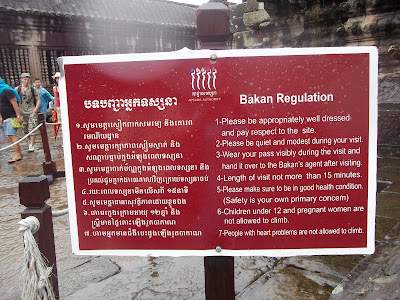One of the absolute highlights of our visit to Cambodia was a trip on motorized canoe to the floating village of Kampong Phluk, located on Tonle Sap, the largest lake in South East Asia
Our tourist guide decided to make sure that we visit this site for sure and kept it a surprise. Little did we know what was in store for us. There was a point of time at which we were wondering why are we sitting in the middle of just water and nothing to look forward to when suddenly you first see a large floating barge and the guide says this is where the villagers parties. As the canal gradually widened, a pagoda on stilts shrouded by wild grass came into view. Soon enough, rows of houses on stilts, and then, an entire water civilization emerged in the middle of nowhere: Kampong Phluk - a floating village, hidden to the outside world.
Pagora
Kampong Phluk is a cluster of three villages of stilted houses built within the floodplain of the Tonle Sap lake, about 16 km southeast of Siem Reap, Cambodia. Flooded mangrove forest surrounds the area and is home to a variety of wildlife including crab-eating macaques.
The houses of Kampong Phluk are built on top of wooden poles and stilts between six and eight meters high and tower over the boats moored along the river, which snakes through the village before heading out into the Tonle Sap lake. But this quirky water body doesn't retain its size throughout the year. In the dry season, the lake drains out back in the river and shrinks. But in the wet season, fed by the river and the rains it swells, nearly five times in size, to a whopping approximate 12,000 square kilometers informed our Khmer Guide. In the swell, the silt gets deposited on the floodlands. During the dry season when the lake is low, the buildings in the villages seem to soar atop their 6-meter stilts exposed by the lack of water. At this time of year many of the villagers move out onto the lake and build temporary houses. The most important profession of the people of Kompong Phluk is fishing based in shrimp harvesting. During the dry season the villagers become farmers and it is mainly rice fields.
All the houses are well equipped with basic household appliances like TV, audio system etc. Even though electricity is not feasible, the village is powered by portable car batteries. We could see the boats with batteries crossing the river to get charge on the charging station on the dry land.
Police Station in middle of the water
A sad part of this beauty is that the villagers face the threat of waterborne diseases and it is the children who suffer the most. Dengue is a killer disease here. That is why maybe the villagers have built a large Buddhist temple also in the village which we visited and there was a different kind of serenity and calmness there.
Buddhist Temple
We had to get the ticket from a rustic shed on the high water market in village and take a canoe out to the village. The journey to the rustic shed was also interesting. The car driven by our tour guide was parked before the marshy lands begin. We then had to get into open air cart mounted on top of a weird combination which looked like a cross between a scooter and truck.
It was interesting to see diesel being sold in empty bottles which was primarily to run these machines.
Our return journey from the village was breathtaking. There was a very thin line between the water and the sky.






































































